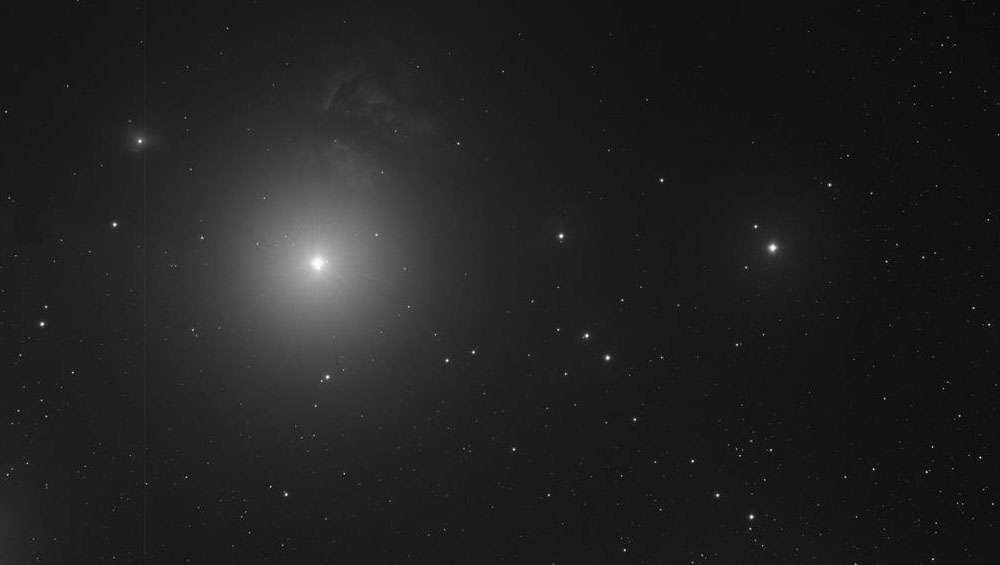Create a free profile to get unlimited access to exclusive videos, sweepstakes, and more!
Farfarout is now literally the most far-out object in the solar system

If objects lurking at the edge of the solar system are far out, then this one is far far out. At least that is what astronomers are calling it.
Human eyes have now seen the most distant object ever found in our solar system. The planetoid appropriately nicknamed “Farfarout” outdoes previous record holder “Farout” at an average of 132 times the distance between Earth and the Sun. Its thousand-year orbit around Neptune is a strangely elongated path that can take it up to 175 times as far as Earth is from the Sun at its extremes. This peculiar orbit means it was probably manhandled by gas giant Neptune’s gravity in the past, and likely still is.
Farfarout almost didn’t seem real at first. It was very faint even through the lens of three telescopes — from the original observations of the Subaru 8-meter telescope perched on the top of Maunakea in Hawaii, to the follow-ups with Gemini North and Magellan. Astronomer Chad Trujillo was part of the team that proved this not-quite-planet was for real.
“We had a strong suspicion that it was real just from the initial discovery images,” Trujillo told SYFY WIRE. “Although you can see there's a lot of noise in the images, if you look carefully, Farfarout is faint and looks a lot like some of the fainter background stars, except that it's moving between the images we observed. When we look at this motion, it seems to be at a speed and direction that is consistent with a real solar system object orbiting the Sun, which is not true of anything else in the images.”
There have been misconceptions about the outer solar system as being an expanse of mostly empty darkness. That is now being disproved, but it can take a while to be sure that what you’re looking at really is the type of thing you’re looking for. Trujillo and his team were convinced that Farfarout was an object out there that was not just a blurry star, but they had to keep watching it for several years before they could call it. Objects at distances that extreme need to be tracked for longer stretches because it takes them forever to journey around the Sun.
Empires have risen and crumbled in the time it takes for Farfarout to complete just one orbit. While a thousand years is nothing in cosmic terms, astronomers don’t exactly have that kind of time, so they needed to watch and make sure it was indeed moving around the Sun before figuring out its orbital period. But how exactly did the gravitational power of Neptune warp its orbit into this thousand-year odyssey? Trujillo has an idea.
“Farfarout has an elongated orbit that has its closest approach near Neptune,” he said. “We think orbits like these are caused when the object gets too close to Neptune. Because Neptune is a giant planet, if something is on a circular orbit (like a lot of the Kuiper Belt Objects) but gets too close to Neptune, it can perturb the orbit and fling the object out farther than it initially was. But the closest approach will always stay near Neptune.”
So Farfarout is kind of like Neptune’s frenemy. It will run as far away as it can only to get close again. Where exactly Farfarout came from is still undetermined, especially because it will be a while before we can get any spacecraft to sample an object so in the no man’s land of the solar system, but Trujillo believes it must have formed within the solar system. He believes it is unlikely that Farfarout was an intruder like ‘Oumuamua, and that there are Kuiper Belt Objects which will probably end up surrendering to the same fate of having their orbits messed around with by Neptune. Whether it formed close to Neptune or if Neptune captured it is also still a mystery.
What is next for Trujillo and the other astronomers who were finally able to prove Farfarout was not just a figment of their imaginations? Trujillo himself is excited to continue finding things that make the outer solar system anything but an empty void of darkness.
“Most interesting are the remote objects that always stay farther out than Neptune,” he said. “They can give us clues to what else might be in the very distant solar system, for instance if there is an undiscovered giant planet out there as has been theorized in the past several years.”
Now that’s beyond far out.


























